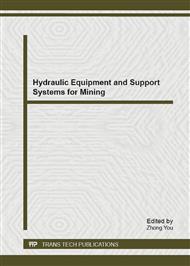p.553
p.557
p.561
p.567
p.572
p.577
p.584
p.589
p.594
Prediction of Gas Emission Quantity Based on Least Square Support Vector Machine
Abstract:
Gas emission quantity has been affected by several natural factors and development of technology, which is a nonlinear and high-dimension problem. By using least square support vector machine (LSSVM), gas emission quantity in mined- out working face has been calculated, and then it has been compared and analyzed with measurement. Besides, gas emission quantity in pre-mining has been predicted. The results indicate that the higher the prediction accuracy of LSSVM is, the stronger the generalization is.
Info:
Periodical:
Pages:
572-576
Citation:
Online since:
December 2012
Authors:
Price:
Сopyright:
© 2013 Trans Tech Publications Ltd. All Rights Reserved
Share:
Citation:


